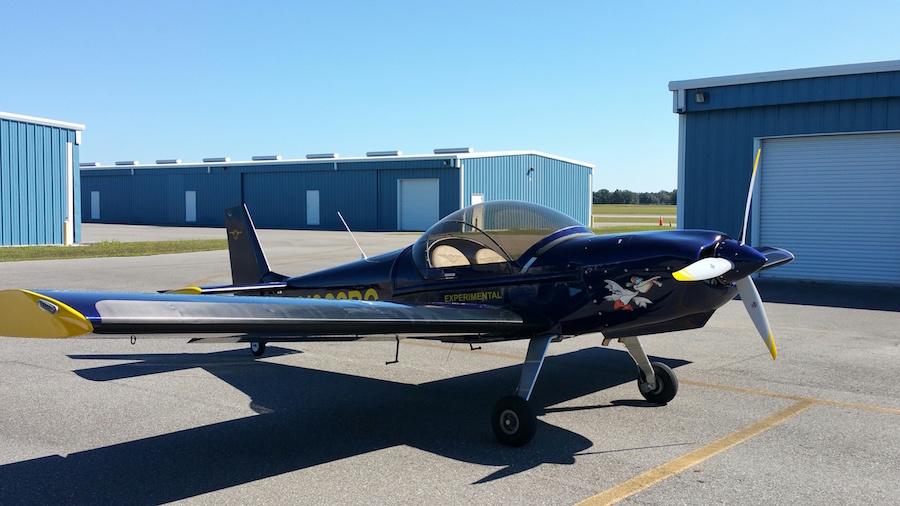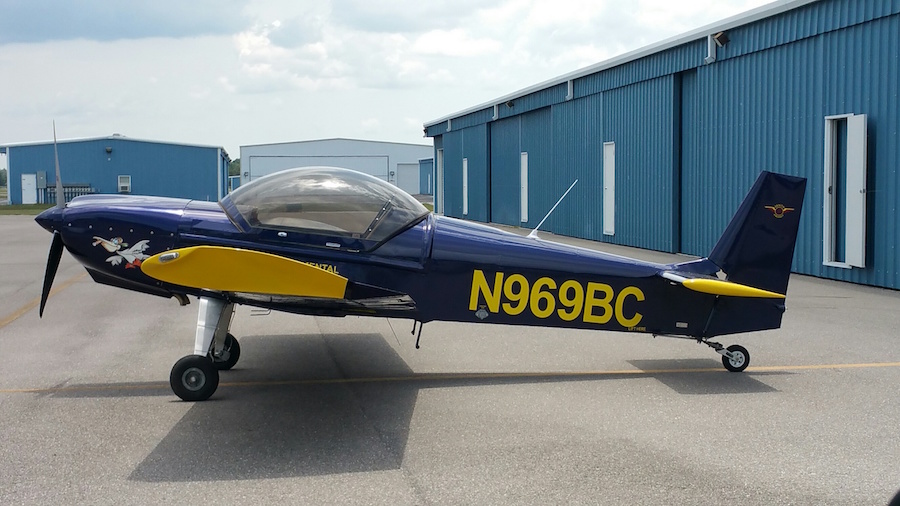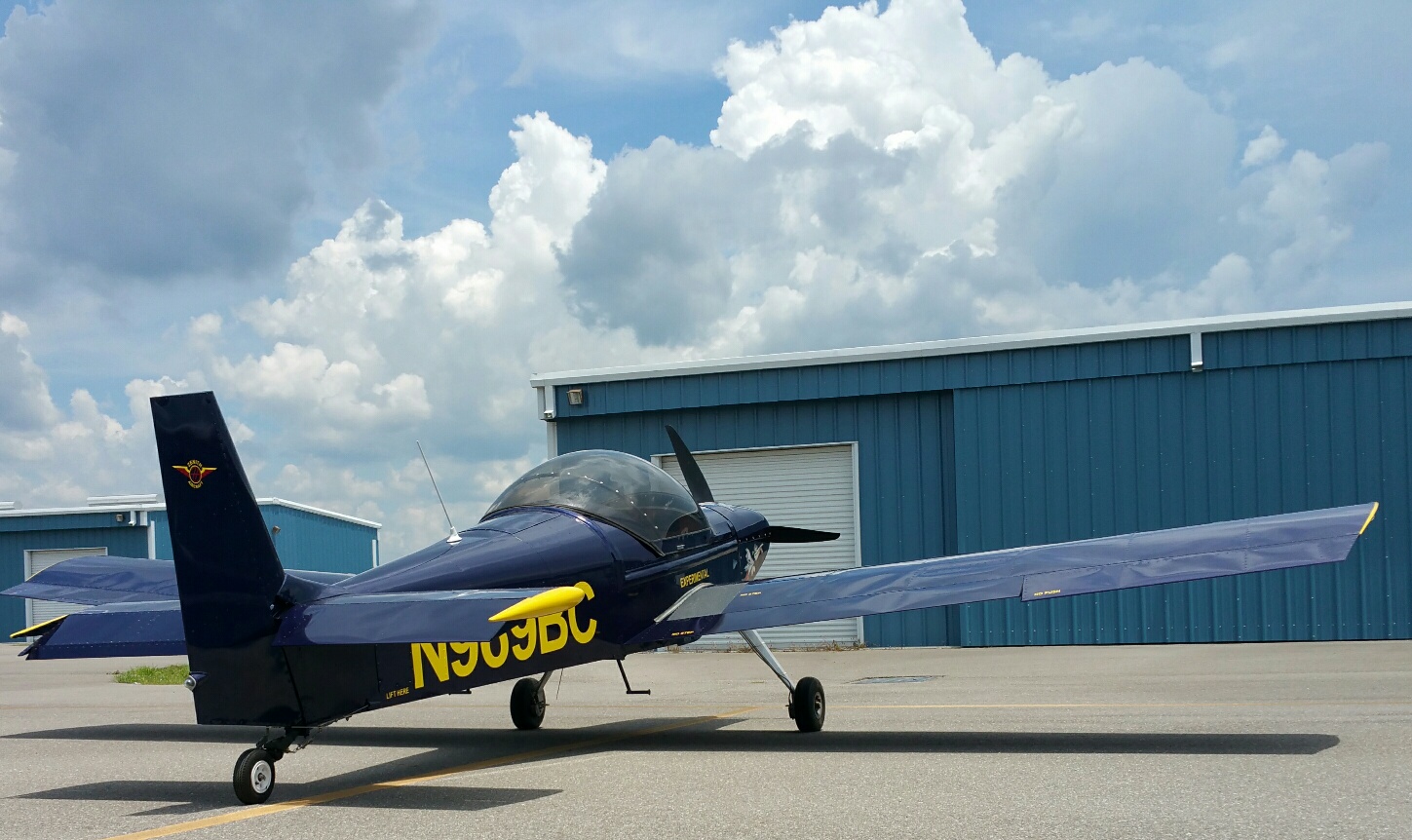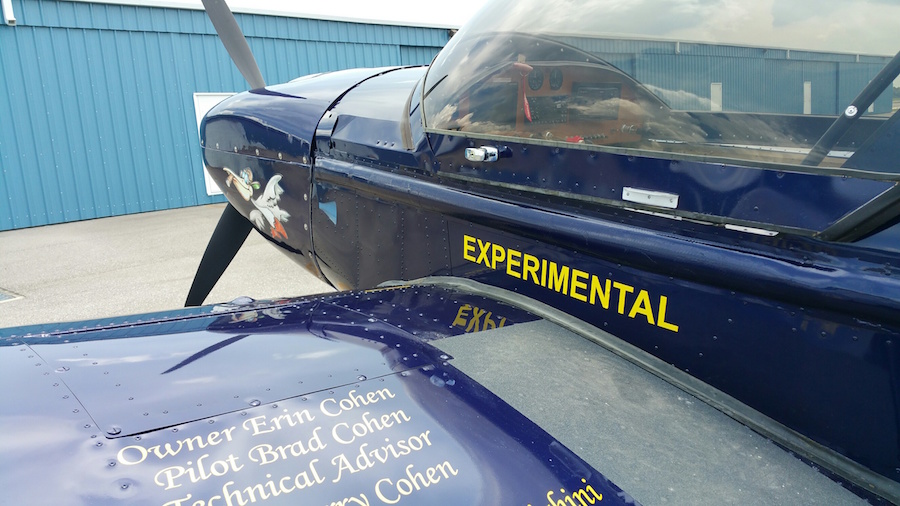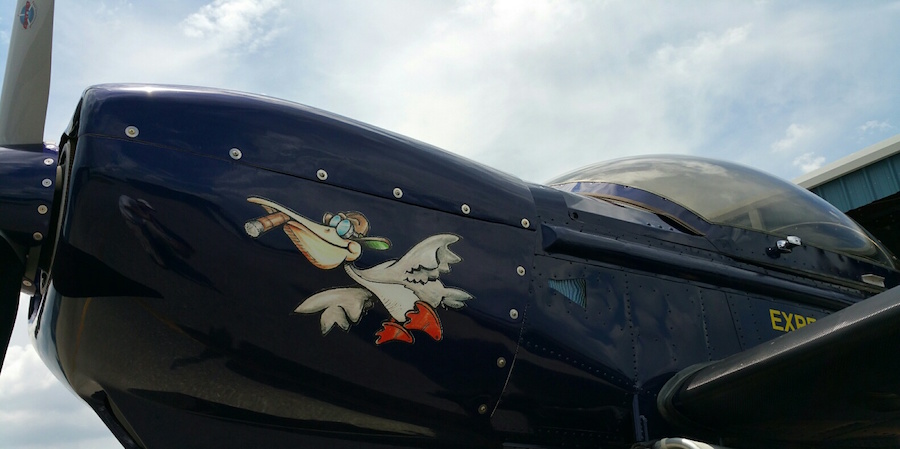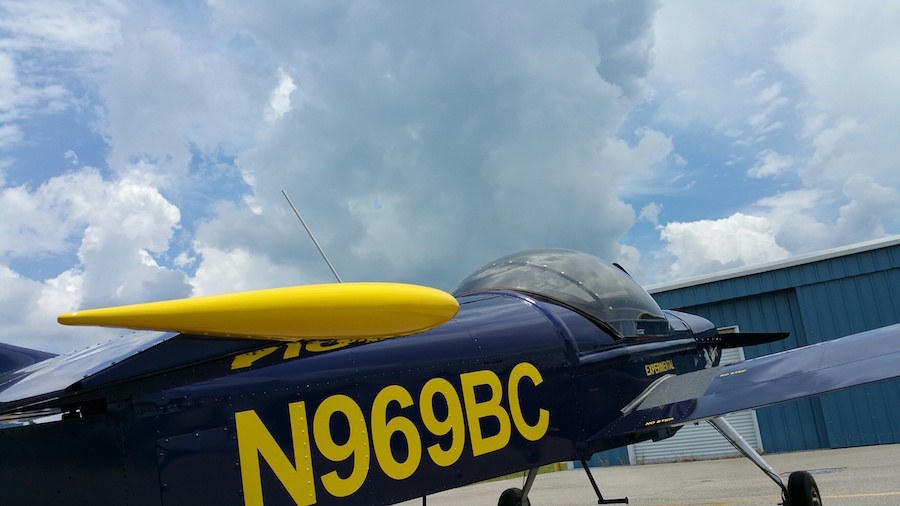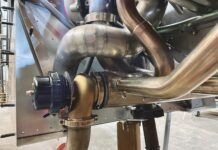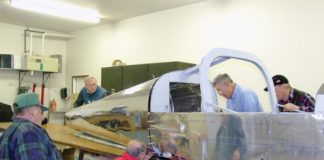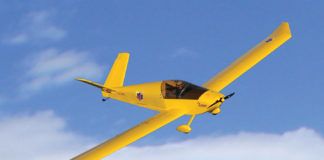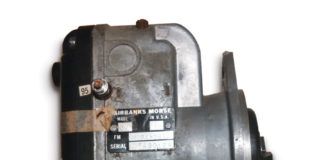I grew up in an aviation family. My father, who is still an active pilot flew corporate aircraft for forty years as well as being an A&P mechanic. Dad taught my older brother, Mark to fly and despite having our father as his CFI, they still talk to one another. So it would be a bit of an understatement to say that airplanes were always a theme in the house. The flying magazines were delivered into our aviation-themed mailbox then stored chronologically in a basket over which hung a needlepoint of a WACO biplane.
I got my private ticket while serving in the US Coast Guard in 1988 but the flying fell to the wayside as I exited the service, went to college and started a career. My chance to realize the dream of building my own airplane came in 2004 when I was given a ride in Jim Olsen’s Zenith Zodiac 601HDS. I knew I was hooked, I was bitten. I tried calling my father to talk some sense into me, I wanted him to tell me what an awful idea it was. Instead of being the voice of reason, his response was “you might as well do it now” meaning before I grow up, get married and have a family. I looked at other planes; The Kitfox (I really wanted something metal), The RV Series ( I have friends, but none close enough to crawl in the back of a tailcone, in my garage, in the middle of a Florida summer to buck rivets. Thousands of rivets). Every contender was held up against the Chris Heintz design and every one seemed to pale (to me) in comparison. Plus the 601 HDS model had just been updated to the XL model. Not only was it going to be an XL but it was going to be a tailwheel XL. Why tailwheel? without starting a Hatfield and McCoy discussion of nosewheel vs. tailwheel, you have to admit, it just looks cool to taxi up in a tailwheel plane.
I had to wait three months to get the first three crates from Zenith. This gave me plenty of time to second guess my decision “Am I really going to do this? Am I really going to build my own airplane? and to figure out which year I’ll fly to Sun and Fun instead of drive “It’ll be Sun and Fun 2003, maybe 2004 but certainly before Bush gets out of office” (It would actually be President Obama’s second term) and plenty of time to turn my garage into a shop. I had some friends placing “dibs” on my belongings, because, as you know, all homebuilders are “crazy” while other fisherman friends asked if I would be able to be an airborne “spotter” for them while fishing. I did have one person ask me if I would be interested in bringing “merchandise” up from Cuba once I started flying (funny, I haven’t seen that friend for awhile). This is also the first year that I reserved my N-number. Seeing my name on the FAA website, seeing the number that I picked out was one of the motivators I used to keep plugging away. The other motivator? Imagining what I would write when I finally got to submit my own picture to this very column.
I scoured the flea markets and the discounted/ discontinued/ remanufactured shelves at Sears for the tool essentials; A tabletop bandsaw, a drill press, a good air compressor and a small fridge for “adult beverages.” The one tool I knew I had to buy new was a good hand drill. Although I wasn’t building from plans, I did purchase my kit long before match-drilled pilot holes and Quick-Build options became the norm. Each rivet hole had to be drilled. (Measured. Spaced. Marked. Remeasured. Remarked. Pilot-dilled, cleco’d then drilled again and deburred) I bought a Ryobi corded drill. That drill and I have been through lots together. You can borrow any tool you want, but don’t touch the drill. Drillbits. Lots of drillbits. And Sharpies, dozens of Sharpies. The clerk at Office Depot probably thought I was inhaling the ink from them. If I told her what they were for, she would have been convinced that I was sniffing the ink!
Slowly, Very Sowly, 9BC started taking shape. I remember a Chiris Heintz comment that he designed the plane to be built so you could see the plane take shape in a relatively short period of time. Zenith still holds “Rudder Workshops” where you can see your handiwork in the span of a weekend. Soon I had the rudder leaning up against the wall next to the TV in the living room. The stabilizer was in my bedroom. I kept parts in the house as a constant reminder of my eventual goal. (This was also before I got married). Eventually I had the fuselage built and on its feet. I would sit on a milk crate in the cockpit and imagine my first flight. I would make silly airplane noises. I enjoyed a beer and cigar sitting in my obsession (That was the only alcohol consumed in the plane but the first of hundreds of cigars.) It was while consuming one of the aforementioned adult beverages when the inspiration for my nose art occurred. I was living near the beach and always admired how ungainly a pelican looked on the ground but yet how graceful once airborne. A friend of mine is a graphic artist and transformed my sketches and ideas into the personification (pelicanification?) of my project. Each day I spent on the plane was recorded in my builder’s log. After the first year I had to add a tab for the next. I never thought I would have 9 such tabs, but so be it. Some tabs only had a single log page behind it, some tabs had ten. The project did take on a life of its own but not at the expense of my own.
I made the move to Zephyrhills, FL (KZPH) in 2010 when the project outgrew the garage. this is also when the wing upgrade kit was made available. I chose KZPH because Bob Berube and Russell Lepre @ Flightcrafters were assisting with the wing upgrade package. Hangar space was available and just around the corner from Flightcrafters. Bob was performing EAA technical counseling at that time, and I had a number of other builders around to help guide me (“Ummm, Brad, you know that you should put a washer under that nut, right?). I asked everyone who helped me to sign the baggage area bulkhead. A project like this requires the help of family and friends (and on at least one occasion, an unsuspecting FedEx driver, who looked at me as if I had gone completely mad when I asked him to hold a wing rib while I clecoed it in place) and I wanted their names to stay with the plane as a permanent reminder. Besides Russ and Bob, I kept Zenith at the top of my speed dial list. Shirley would always answer the phone with an audible smile in her voice. I probably single-handedly financed her retirement with the number of replacement parts I ordered. (“Measure twice, drill once” sometimes got forgotten, OK not “sometimes”, more like “often”) and Roger Dubbert would always answer the most inane question with the patience of Job.
I bought an overhauled Lycoming O-235L2C from JB aircraft engines of Sebring Florida. I drove down to Sebring a few times to watch the engine come together (Hint; A couple dozen donuts taken to your engine overhauler always helps when you “drop in” to check on the progress). The day I heard “My” engine start for the very first time on the test cell was a huge motivator to keep plugging away on the build.
One item that I knew I wanted to install was a recovery parachute. I used a Magnum system bought through U-Fly-It light sport here in Florida. It does add 40 pounds to the plane. Parachutes on planes, I have found, are like nosewheels vs. tailwheels. The two camps are very opinionated and polarized. Personally I feel that the added weight of safety equipment is tempered by the peace of mind that it gives to me and my family.
Avionics went in. I bought the Dynon D-180 EFIS/EMS system, an ICOM A210 comm radio, Garmin GTX-327 transponder as well as a steam gauge back-up airspeed indicator and altimeter. The nightmares of installing my own avionics began shortly after I started building the plane. The dreams would all start the same, I saw myself hooking a big wire to the battery, then all of a sudden I was wading through waist-deep 12 gauge wires. Soon cyborg seagulls were dropping circuit breakers on my head until I woke up in a cold sweat. Once I got started, however, I found that the installation of the avionics was… actually much worse. I very much wanted to install as many prefabricated harnesses and components but anything fancier than an old-fashioned copper bus bar and resettable breakers was given the thumbs’ down by my tech advisor (AKA “dad”). With each item that went in I got that rush of satisfaction (Relief?) when the component powered up without sparks (hint; sparks are NEVER good when you put power to ANYTHING). There were setbacks, for sure. I recall the day when a friend, Terry Gorman was helping my wire up the split master switch. Heart pounding in my throat I flicked the power switch. there was a faint “pop” then the wisp of smoke that mixed with my electrical confidence rose towards the hangar ceiling. The unmistakable scent of burnt plastic mixed with the smell of the cold sweat on my forehead. If Terry had not been there, I know that I would have silently turned around and calmly locked the hangar door on my way out. No doubt the plane would still be awaiting my return to this day. Instead I let loose a long string of words that would rival those that emanated from the gear well of the King Air so many years before, took a deep breath and assessed the damage. it wasn’t as bad as I had convinced myself that it would be and all of the burnt wires were replaced. I still keep one piece of that burnt wire on my rear-view mirror. A daily reminded of how far you can come with the help of fiends. Every day I would swear that I would find an avionics technician to pay to finish the installation and every day I inched closer and closer to completion on my own. The day that I completed the wiring and everything actually worked had few rivals during the completion of the plane.
The build marched towards completion with the same milestones that everyone else celebrates, the first engine start, the first taxi under power, the first attempt at calibrating the fuel tanks, etc. Throughout this process I had the unwavering support of my wife Erin and my three kids. Erin was my rock. There were days that I would come home and complain about how little I accomplished during my day at the airport and she would ground me by asking that same, simple questions “How many planes have you built before?” I would give the same answer “um… one, well actually 3/4 of one” she didn’t have to finish her statement, she had made her point. Sometimes we are our own worse critics. She tolerated (and still does) my endless comparison of airplanes to just about everything else in my life. She will calmly look at the three dozen pictures I have taken of some nebulous part buried deep in the bowels of the plane, nod as if she understands and then she whisks me out of the kitchen so she can resume her task at hand.
We talked about leaving the plane natural aluminum to save some weight but I knew keeping an aluminum plane looking good would require lots of polishing, and I didn’t want to spend my airport days polishing instead of flying. I knew I wanted the plane to be my favorite color of blue and Jeremy, my painter, did not disappoint! We accented the blue with yellow vinyl graphics by Amy @ Revo. Even though we share the same colors, there will be no mistaking my 601XL for a US Navy F/A-18 (not to mention that the Blue Angels don’t typically sport nose art in the form of a cigar-chomping pelican).
It’s not fair to put a price on N969BC. I mean, yes, I know what it is insured for. I known how much all of the receipts total up to be. But the sum is greater than its parts. Building this airplane has allowed me the opportunity to know my airplane inside and out. I set every rivet, I routed each wire with my own hands. There is no doubt that the Tampa FSDO office knows this because they could hear the animation in my voice as I qualified for my Repairman’s certificate. They could see the excitement in my eyes as I described exactly how the trim system works-from memory. There is no price you can assign to the feeling of accomplishment that building your own airplane brings. It’s kind of like listening to all of your married friends talking about watching their child take their first unsteady steps. You can use words to describe, you can show them the shaking 30 second video clip, but until you’ve sat there and watched your child fumble towards you, you can appreciate-but never fully understand.
Opinions are said to be like different body parts… everyone has one. Looking back am I glad that I built my own plane instead of buying a used 172? Well if you had asked me that exactly one year ago when I was knee deep in half-crimped wires and incomplete circuits – Clyde Cessna’s machine would have easily won. Ask me now and there is no doubt that seeing my OWN airplane take to the sky, that amalgamation of every dream of flight that I’ve had over the past ten years-was the only way to go. Thank you Ed Knapp for being so willing to help me through the first couple of flights. Ed proved to myself and the watching world (me, one lineman and one transient Mooney pilot) that dreams really can take flight.
Would I build another plane? What was a question for a single man is now a question for the family, Quoting from a person much wiser than myself (My wife) I’ll only say this: “we’ll see.”
Brad Cohen
Palm Harbor, Florida

